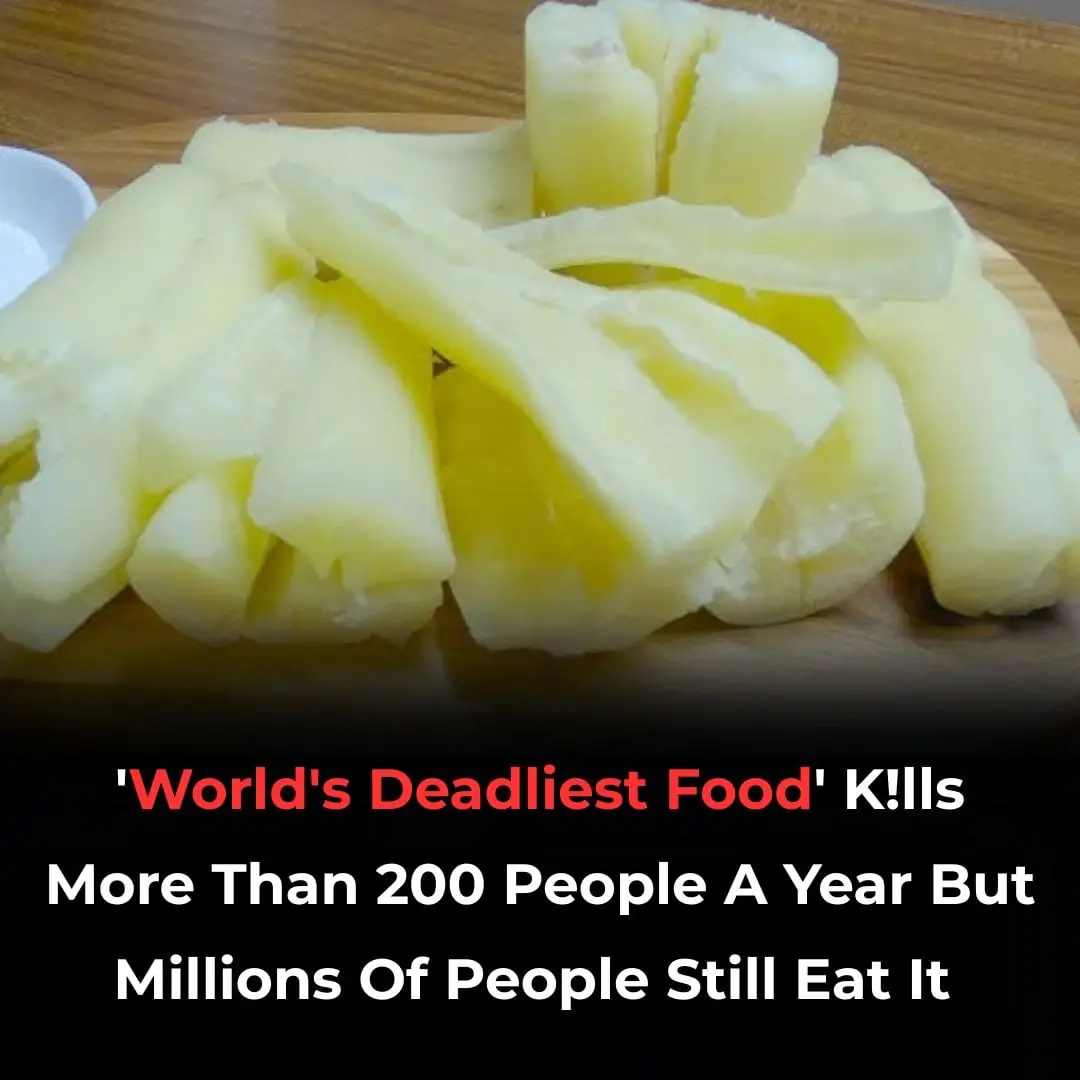
Over 200 People Are Killed By The “World’s Deadliest Food” Every Year, But Almost 500 Million People Still Eat It
Every year, over 200 people die from consuming what is known as the “world’s deadliest food,” yet nearly 500 million people still eat it.
There are many foods that could fill you up quickly, but you wouldn’t find them on your dinner plate every night. So, what is the food that’s both deadly and widely consumed around the globe?
Cassava, a plant and a staple food for many, plays an important role in the diets of millions of people worldwide. Each year, it is consumed by over 500 million people, and hundreds of millions of tons of cassava are grown around the world.

Originating in South America, cassava is both a plant and a well-known food, but it also comes with significant risks. The plant’s stems, peel, and leaves are toxic and can produce hydrogen cyanide, making it potentially fatal if consumed improperly.
The World Health Organization (WHO) reports that around 200 people die annually from eating improperly prepared cassava. This is why it has earned the grim title of the “world’s deadliest food.”
The WHO explains: “Cassava tubers contain varying amounts of cyanogenic glucosides that serve as a defense against animals and insects. When these glucosides are not processed correctly, cassava can release cyanide, leading to high dietary cyanide exposure.”
Such dangerous exposure is especially prevalent during times of famine and war. Cyanide poisoning from cassava is linked to several severe diseases, including konzo.
Konzo is a debilitating, irreversible condition marked by sudden paralysis in the legs, which is often a result of consuming bitter cassava, particularly when combined with a low-protein diet. This condition is most commonly found in regions suffering from extreme poverty, where it can occur sporadically or in epidemics.
Despite its deadly reputation, millions of people continue to eat cassava every day without issue. This raises the important question: how can you make sure that cassava is safe to eat?
The key lies in proper preparation. Ensuring cassava is safe involves a lengthy process, including soaking the plant for up to 24 hours to remove harmful toxins.
In Venezuela, for example, people were consuming cassava in its dangerous form because they relied on salty foods to survive during times of food scarcity, as reported by El País.
While cassava remains a critical food source for many, understanding and practicing safe preparation methods can make it a nourishing and safe part of the diet. As awareness spreads about the risks associated with cassava, the methods for properly processing it are becoming more widely practiced, reducing the dangers of poisoning.
News in the same category


Secret tip: How to clean glossy tiles at home without spending a penny

Nighttime Leg Cramps: When to Worry and Seek Medical Help

Why Kidney Failure Is Striking The Young—And How To Stop It

Only the “Unwise” Combine These 5 Foods with Pork

Spot Pancreatic Cancer Early – 11 Warning Signs You Shouldn’t Ignore

Postmenopausal Women Can Hardly Avoid Osteoporosis

A man with blo.od fat levels 80 times higher than normal

13 powerful reasons your whole family should drink okra water every day

Three warning signs in the neck that could signal early can.cer

If the following 5 signs appear, you may have liver flukes

58 year old man eats 1 clove of garlic every morning, 6 months later went to the doctor, received surprising results

A Mysterious Leaf for Health: Surprising Benefits, Safe Uses, and Hidden Risks

Scientists May Have Actually Found One Of The Causes Of Autism

36-Year-Old Teacher Dies From Diabetes Doctors Say Was Triggered By Everyday Foods

All The Things You Need to Know About Nighttime Urination And When To Start Worrying

The Body Knows When Death is Near, and It Begins in Your Nose

7 Anti-Cancer Foods That Kill Cancer The Moment You Start Eating Them

A month before a stroke, your body warns you: 10 signs not to ignore
News Post

This One Superfood Could Tackle Major Health Issues—Here’s What You Need To Know

Male contraceptive pill appears to be safe without side effects in early trials

The Volume Buttons on Your iPhone Have Countless Hidden Features

4 Things You Should Never Say At A Funeral — No Matter What

Mass Panic as ‘New Baba Vanga’ Predicts Majo Disasters Striking in Just One Month

8 Early Warning Signs Of Ovarian Cancer You Shouldn’t Ignore

5 foods you should never keep overnight

Pain ON The Left Side Of The Body: What it could mean?

3 Ways to Prevent Snakes from Entering Your House: Protect Your Family

When a Washing Machine Shows 7kg, 8kg, or 10kg, Is That the Weight of Dry or Wet Clothes?

Don’t wear these two types of slippers on the plane—they can compromise your safety

On Humid Days, Walls Are Prone to Mold and Peeling

You Don’t Need to Mop the Floor All Week, But It Will Still Be Spotless Thanks to These 4 Amazing Tips That Very Few People Know

Do you need to unplug the rice cooker after the rice is cooked?

Effective and simple ways to restore a non-stick pan without needing to replace it

Secret tip: How to clean glossy tiles at home without spending a penny

Nighttime Leg Cramps: When to Worry and Seek Medical Help

Why Kidney Failure Is Striking The Young—And How To Stop It
